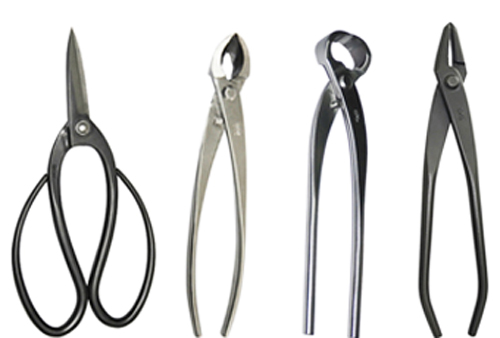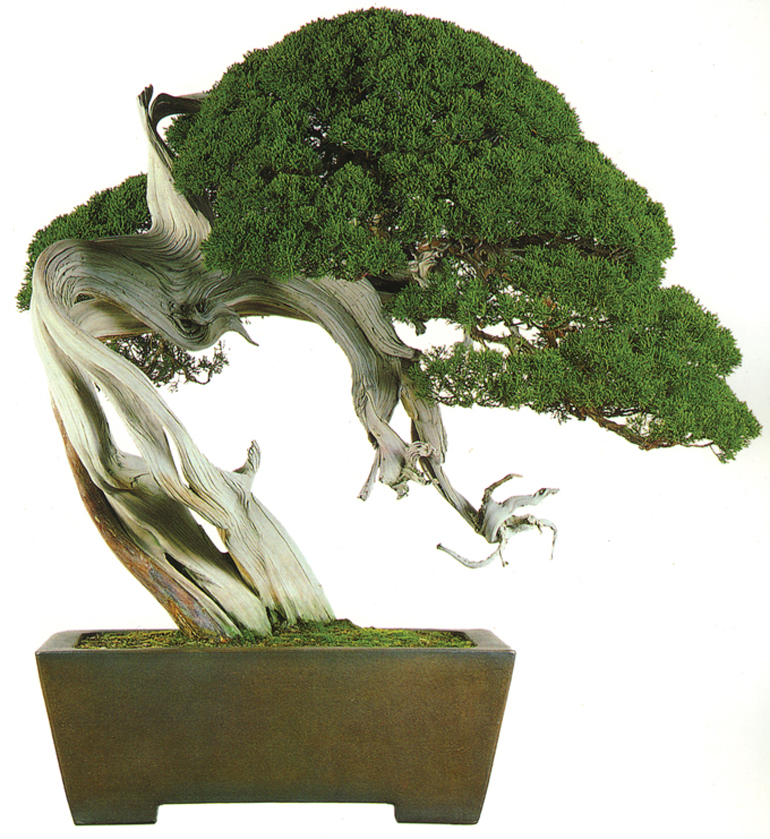
Was this foliage pinched in order to achieve that dense, perfectly refined shape and texture? The answer, according to Michael Hagedorn is an emphatic NO! Except when it isn't. The image is borrowed from our Masters' Series Juniper Bonsai book.
Thought you might enjoy another round of Micheal Hagedorn‘s bonsai wisdom. Most of this post was borrowed and updated from a 2012 Bark Bark Post titled, Pinch! Don’t Pinch!. We added some content and posted it again in 2015. Because it offers an important lesson for anyone who grows junipers, especially those of us who are in the habit in pinching to control growth, it’s worth another look.
Continued below…
ROSHI HIGH QUALITY BONSAI TOOLS
30% OFF OUR LIST PRICES
see below
–
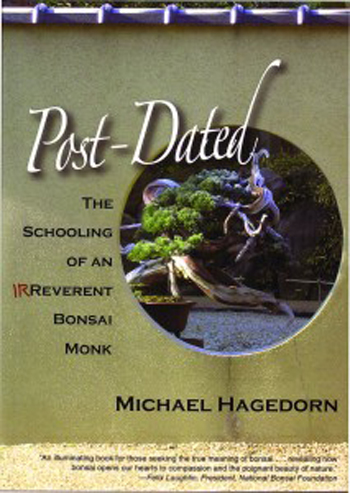
Michael Hagedorn's famous Post-Dated Still the best bonsai read in the English language
Back in 2012 Michael featured a post on his Crataegus Bonsai blog that was titled Never Pinch Junipers. Here’s en excerpt in his own words… Basically, we don’t pinch junipers. We cut new long extensions with scissors…and I know that will raise some eyebrows. I think the idea of pinching junipers with fingers started long ago in translated Japanese articles written by those who did not specialize in or have much experience in junipers. And then we bought into the idea of pinching because it seemed like a way to have fun with our junipers. But pinching, especially over-pinching where every growing tip is removed, has been killing junipers for decades. There’s more here.
SPECIAL Deep Discounts
ON ALL OUR BONSAI FERTILIZERS
–
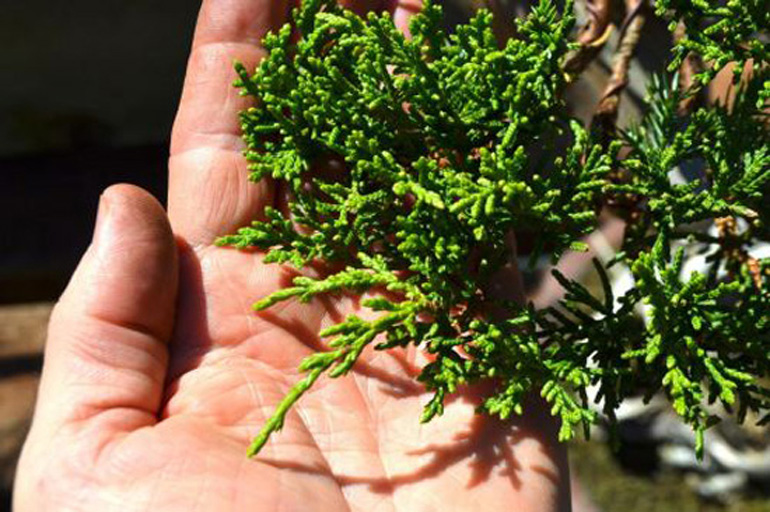
Don't pinch! Michael Hagedorn's hand showing off healthy juniper foliage that he'll never pinch.
But what about Japanese articles that encourage pinching? When Michael mentions “the idea of pinching junipers with fingers started long ago in translated Japanese articles written by those who did not specialize in or have much experience in junipers” I thought uh oh, could it be Bonsai Today that hes’ referring to?
The early issues of Bonsai Today were translated from Japanese to Spanish to English. The person doing the Spanish to English knew nothing about bonsai and, at that time, almost no one else in the West did either (possibly including the person translating from Japanese to Spanish). So it’s easy to see how misconceptions could be passed on and be interpreted as bonsai gospel.
Which brings us to an article in Bonsai Today issue 28 (1993) where Kunio Kobayashi (he’s a famous bonsai artist and teacher and his fame is well earned) where he is quoted as saying (translated twice mind you) “The objective of pinching is to remove the leaves in areas of strong growth, so that you keep the strong branches from growing too long and, at the same time, bring into balance the vigor of the tree’s strong branches (which are pinched) with that of the weak ones (that are not pinched).” There’s more, but you get the drift.
SPECIAL BONSAI AESTHETICS WIRE
KILO ROLLS ONLY 15.95
500 GRAM ROLLS ONLY 8.95
100 GRAM ROLLS ONLY 3.45
–
Pinch? If you look at this photo (from a Kunio Kobayashi article in Bonsai Today 28), it looks like he's showing us how to pinch juniper foliage. When you combine the photo with the text (even considering the possibilities of poor translation) it looks like he advocated pinching.
I’m loath to disagree with Michael on any bonsai topic (Michael apprenticed in Japan for three years and is extraordinarily meticulous and thorough when it comes to bonsai), but equally reluctant to disagree with Mr. Kobayashi. Fortunately, I think there’s a way out (beyond the old saw about reasonable people disagreeing); it’s when Michael says “But pinching, especially over-pinching where every growing tip is removed, has been killing junipers for decades. So, maybe you can still pinch your junipers, as long as you don’t over-pinch. Or maybe just take Michael’s advice and use you scissors and avoid pinching altogether.
Of course all this might cause you to question if it’s also possible to over-trim new growth.
Bonsai Today Back Issues
Only 5.00 each
while they last
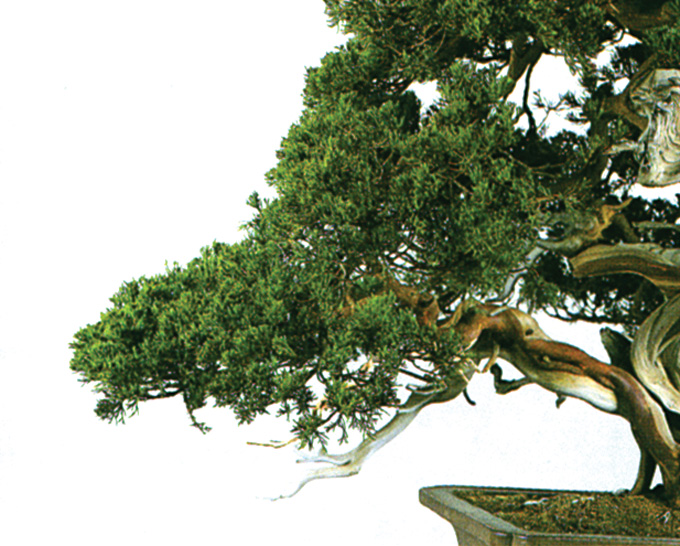
Was this tree pinched? Shimpaku juniper by Kunio Kobayashi from Bonsai Today issue 28. (image courtesy of Bonsai Focus).
ROSHI BONSAI TOOL SPECIAL
30% OFF OUR LIST PRICES ON ALL ROSHI TOOLS
